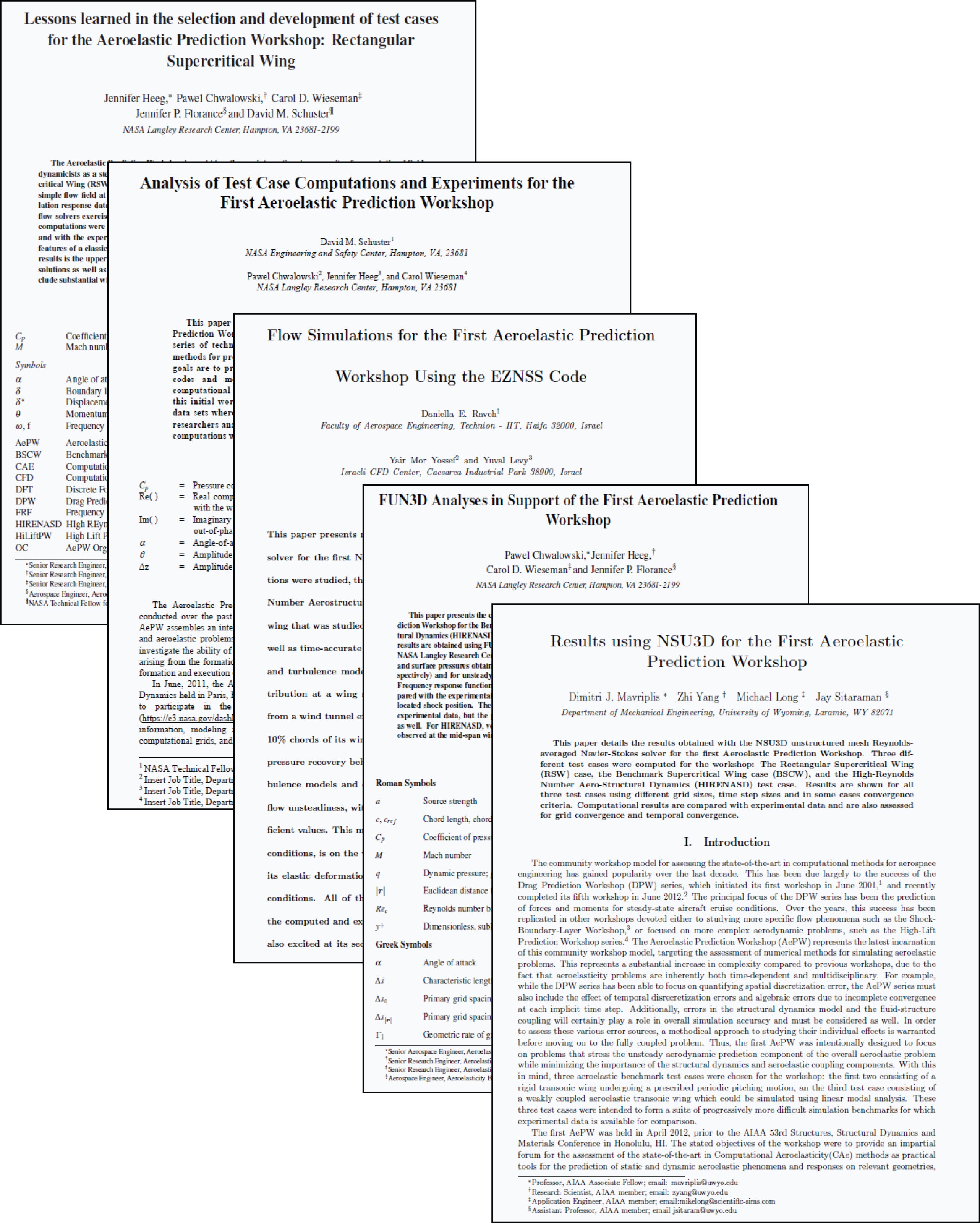The RSW wind tunnel model is shown mounted in the NASA Transonic Dynamics Tunnel in the photo below. Also shown is test engineer Rodney Ricketts.
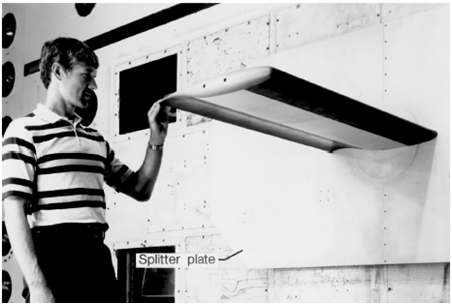
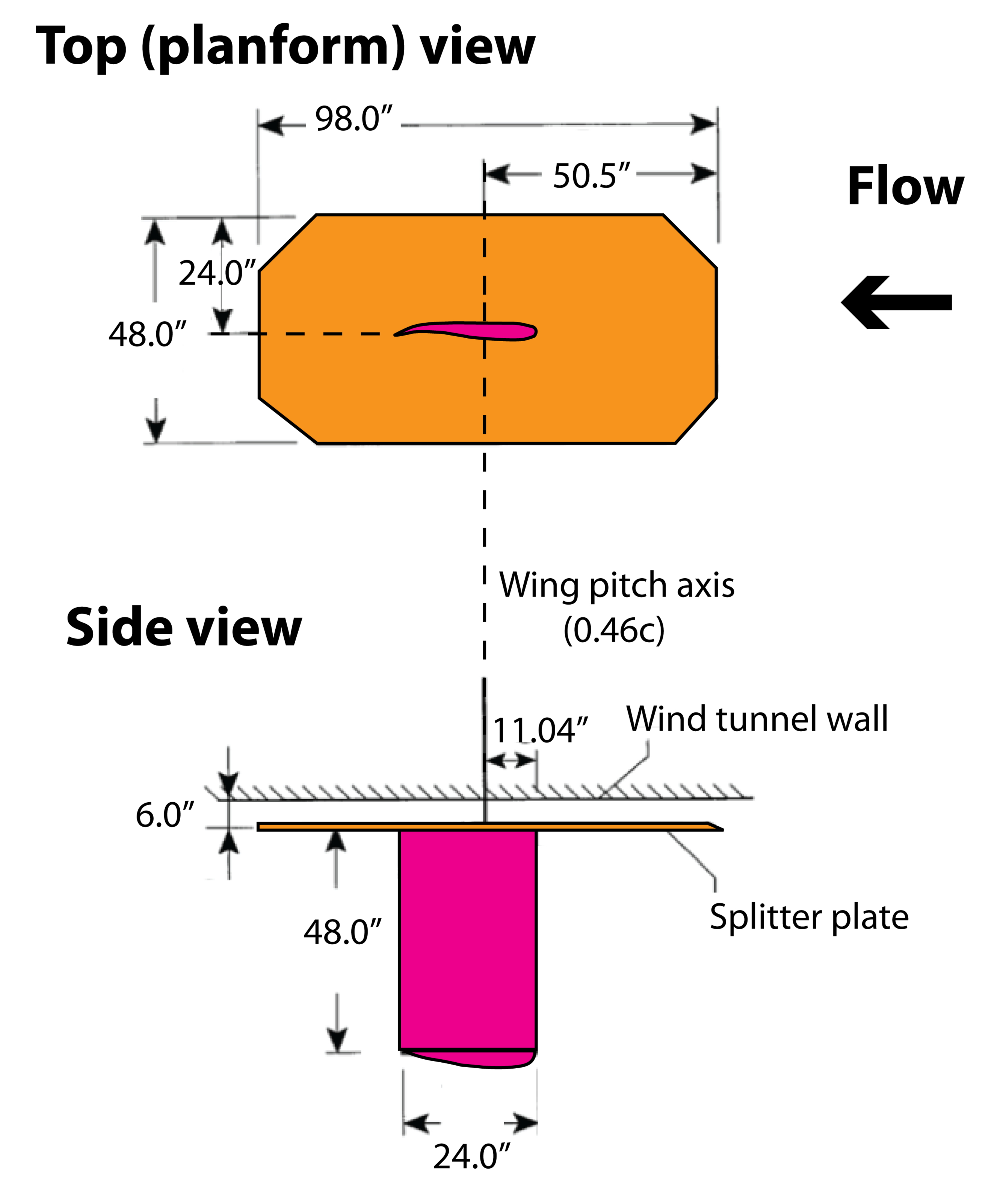
The model was mounted on the TDT east wall to a relatively small, 48- x 98-inch splitter plate, which offset the model 6 inches from the wall. This is shown in the schematic in the figure above. The RSW model has a simple, unswept, rectangular, 24- x 48-inch planform. The wing tip was constructed as a tip of revolution.
The airfoil section is a 12-percent-thick supercritical airfoil section which does not correspond to any of the named members of the NACA SC airfoil families. The airfoil is shown in the figure below and the airfoil coordinates are in the file RSW_airfoil_coordinates_ricketts.xls.
The splitter plate itself is 1 inch thick. Photos of the splitter plate, taken in 2011, after an archeological expedition, are shown below also. The bowtie-shaped cutout in the splitter plate is for the mounting system to reach through the splitter plate and allow the wing to rotate, both at a commanded fixed angle of attack and at an oscillating angle of attack. Notice in the picture of the splitter plate alone that the grime indicates how the model was mounted. There is a circular area surrounding the bowtie. During testing, a "pizza pan" is on the model-side of the splitter plate. In the photograph that shows the model in the tunnel, you can probably see the outline of the pizza pan at the wing root. The wing attaches to the pizza pan, which rotates the wing in a reduced-friction (ideally frictionless) manner. Things that may or may not have influences in the experimental data are the pizza pan leading edge, the vertical seam of the splitter plate which runs right down the wing root mid-chord, and the fastener heads (which are shown in both the model-in-tunnel photograph and the splitter plate photograph). From the photographs, it doesn't appear that the seam was covered during testing, nor the fastener heads filled and fared.
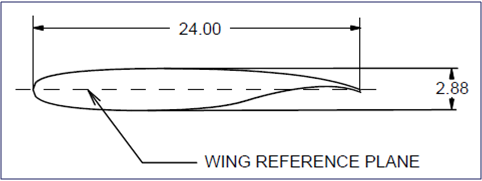
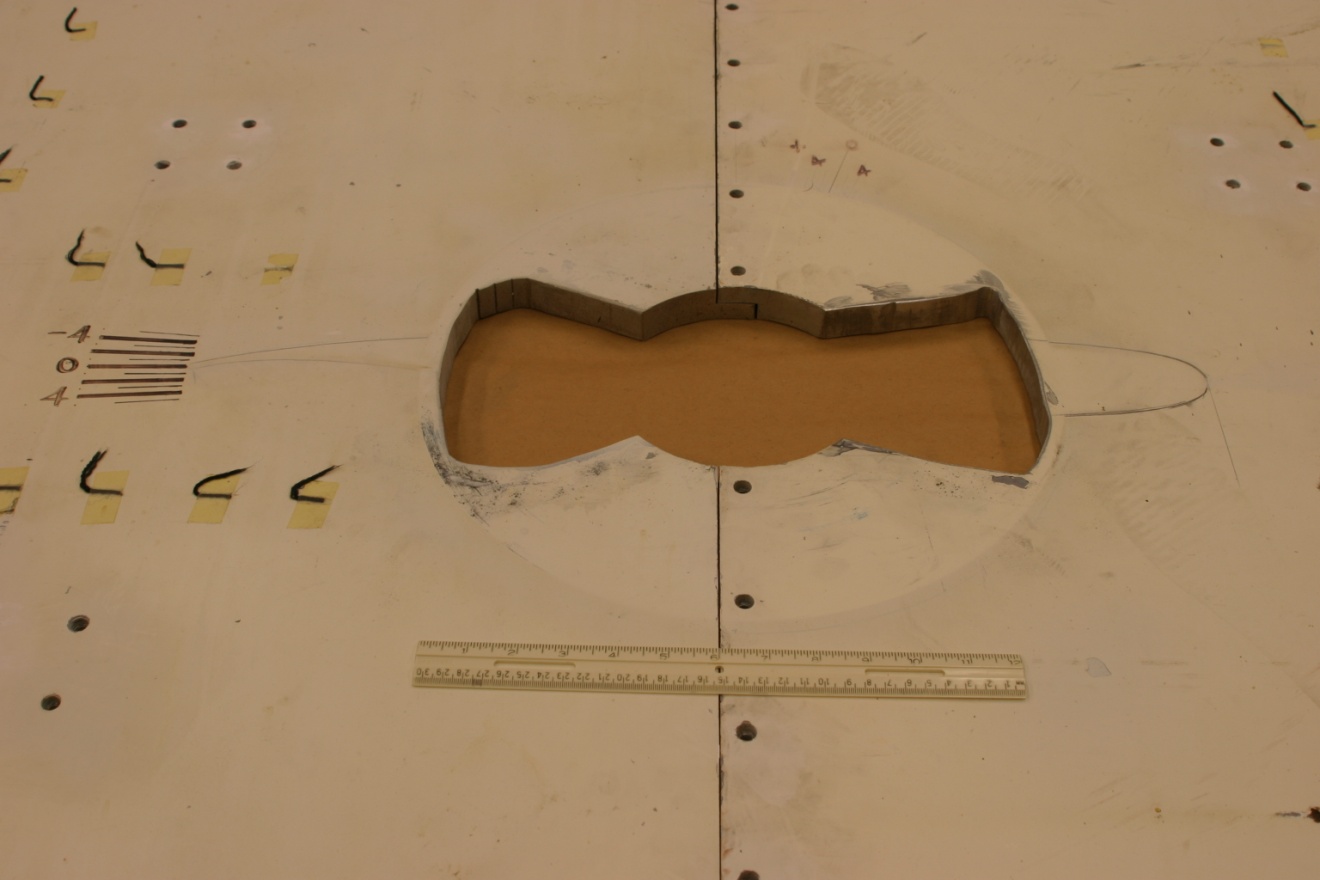
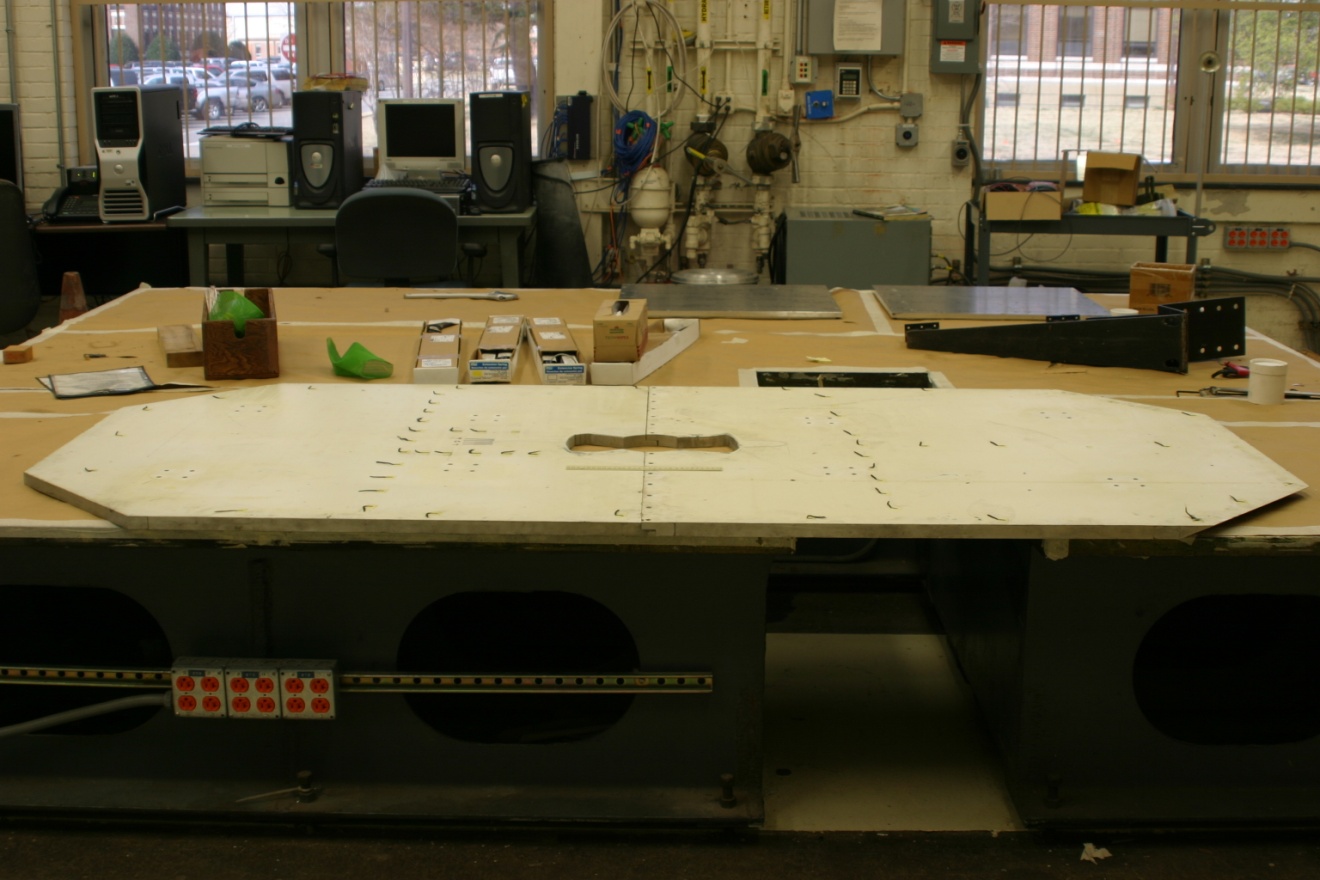
The mounting of the wind tunnel model is viewed as the biggest drawback to using this configuration for computational aerodynamic benchmarking. The splitter plate is woefully undersized and woefully close to the wind tunnel wall. Also notice in the photo of the model mounted in the wind tunnel that the side-wall slots are open. (In the photo shown here, this is really only observable by a single wall slot. The wall slot is the dark skinny rectangle on the wall that visually passes behind Rodney's head.) A pre-workshop study was performed regarding capturing the wind tunnel wall influences on the configuration. This is discussed in the RSW ASM paper (ref Heeg, J., Chwalowski, P., Florance, J.P., Wieseman, C.D., Schuster, D.M., and Perry, B. III, Overview of the Aeroelastic Prediction Workshop, AIAA 2013-0783, 51st AIAA Aerospace Sciences Meeting, January 7-10, 2013, Grapevine, Texas.) and is detailed on the webpage RSW Wall Study.
The model was designed to be structurally rigid, with a first bending mode frequency of 34.8 Hz. For the studies of the AePW, the model was assumed to be rigid.
Model instrumentation included 4 chordwise rows of unsteady pressures at span stations 0.309, 0.588, 0.809, and 0.951 (with 29 pressures per chord), shown in the figure below. The transducer locations can be found in the RSW Analysts' Information Package and in the table below. Note that the transducer locations are given as a ratio of the wing chord, which is 24 inches. All locations are referenced to the wing leading edge. The model was also instrumented with 8 accelerometers, and 1 potentiometer, as shown below.
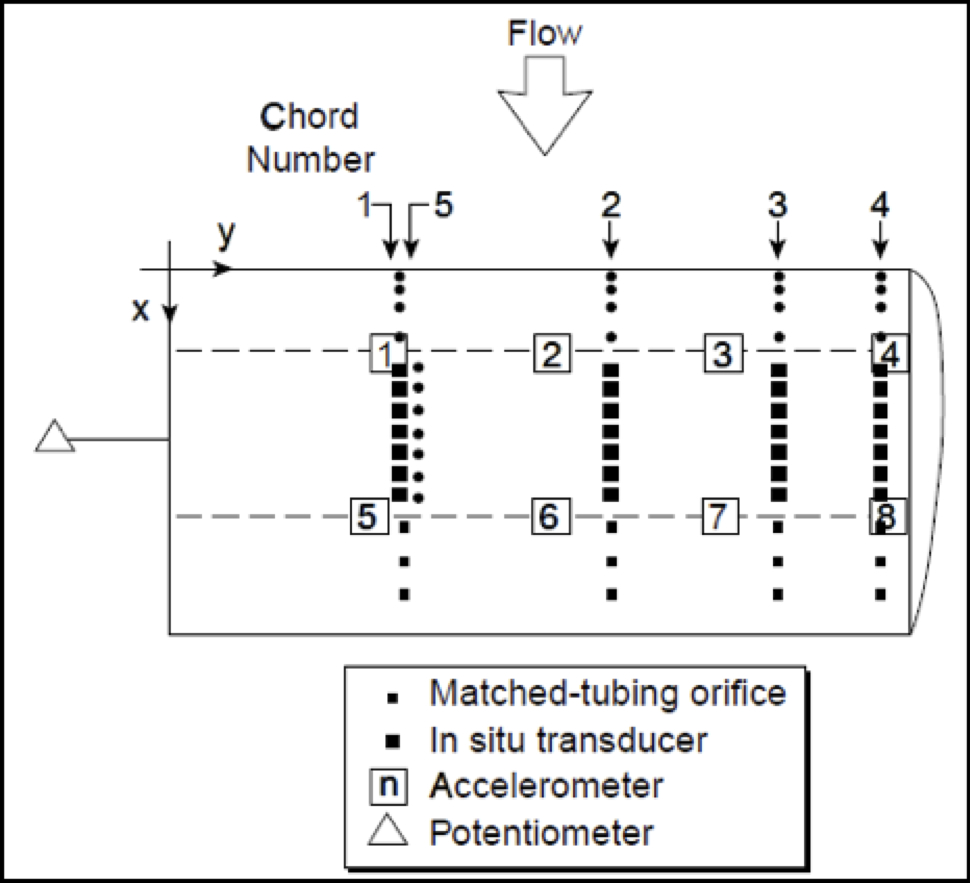
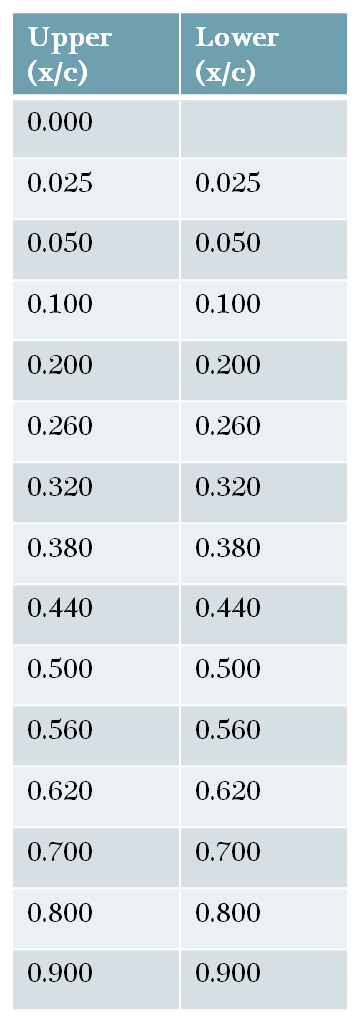
For most of the wind-tunnel test, flow transition was free; however, a few points were measured with a transition strip of size 60 grit affixed at 6-percent chord on both the upper and lower surfaces. This forced transition data was the data used for comparison purposes for the AePW.
